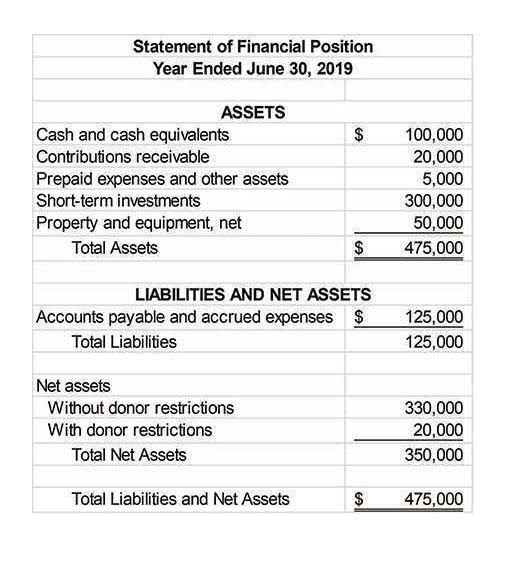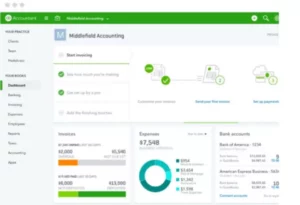
To keep your books in balance, you’ll need to debit Accounts Payable by $20,000. That will likewise reduce your Accounts Payable amount by $20,000.
- A credit card is used to make a purchase by borrowing money.
- If you fully understand the above, you will find it much easier to determine which accounts need to be debited and credited in your transactions.
- The balance of payments accounts can be presented in ledger form with two columns.
- If the totals don’t balance, you get an error message alerting you to correct the journal entry.
- The first step is to determine the type of accounts being adjusted and whether they have a debit or credit normal balance.
- Double-entry bookkeeping will help your business keep an accurate history of transactions, but it can be complicated.
- Each financial transaction made by a business firm must have at least one debit and credit recorded to the business’s accounting ledger in equal, but opposite, amounts.
These steps cover the basic rules for recording debits and credits for the five accounts that are part of the expanded accounting equation. Debits, abbreviated as Dr, are one side of a financial transaction that is recorded on the left-hand side of the accounting journal. Credits, abbreviated as Cr, are the other side of a financial transaction and they are recorded on the right-hand side of the accounting journal.
Understanding Debits
Sal deposits the money directly into his company’s business account. Now it’s time to update his company’s online accounting information. To simply this explanation, consider that a debit entry always adds a positive number and a credit entry always adds a negative number .

That is, if the account is an asset, it’s on the left side of the equation; thus it would be increased by a debit. If the account is a liability or equity, it’s on the right side of the equation; thus it would be increased by a credit. Some accounts are increased by a debit and some are increased by a credit. An increase https://accountingcoaching.online/ to an account on the left side of the equation is shown by an entry on the left side of the account . An increase to an account on the right side of the equation is shown by an entry on the right side of the account . If you pay with a credit card, you have a liability balance with the credit card company.
Review Of Positive And Negative
The balance on a country’s financial account when its current account has a deficit of $80 billion. All trade deficits on a country’s current account implies an equally sized financial account surplus, while all trade surpluses implies an equally sized financial account deficit.
On the second day of the week you pay your rent, which is $1000. Since this is an expense, you subtract this amount from your cash balance. Let’s assume you have a $5000 cash balance at the beginning of the first week in June.
The term debit comes from the word debitum, meaning „what is due,” and credit comes from creditum, defined as „something entrusted to another or a loan.” An increase in liabilities or shareholders’ equity is a credit to the account, notated as „CR.” For each and every transaction, the total of the debit amounts must be equal to the total of the credit amounts. In simple words, Debit refers to those which makes losses or which decreases value of something. Credit refers to those which makes income or gain and increases the value of something.
Remember that debits are always entered on the left and credits on the right. When recording debits and credits, debits are always recorded on the left side and the corresponding credit is entered in the right-hand column. Most businesses, including small businesses and sole proprietorships, use the double-entry accounting method. This is because it allows for a more dynamic financial picture, recording every business transaction in at least two accounts. Debits and credits are best recorded using double-entry accounting, since it allows for complex transactions to be recorded throughout multiple accounts.
Through seeing how they work in practice and doing exercises they will become second nature – a little bit like learning to swim or ride a bicycle. Enrol and complete the course for a free statement of participation or digital badge if available. Anyone can learn for free on OpenLearn, but signing-up will give you access to your personal learning profile and record of achievements that you earn while you study. Full BioRobert Kelly is managing director of XTS Energy LLC, and has more than three decades of experience as a business executive. He is a professor of economics and has raised more than $4.5 billion in investment capital. Tim is a Certified QuickBooks Time Pro, QuickBooks ProAdvisor, and CPA with 25 years of experience. He brings his expertise to Fit Small Business’s accounting content.
Debit And Credit Video
Expert advice and resources for today’s accounting professionals. Outsource bookkeeping, it’s important to discuss which practices work best for your business.
When you pay a bill or make a purchase, one account decreases in value , and another account increases in value . The table below can help you decide whether to debit Recording Your Debits and Credits or credit a certain type of account. Kashoo offers a surprisingly sophisticated journal entry feature, which allows you to post any necessary journal entries.
If you are using an accounting software, you can record transactions using a journal entry. As a result, the most important control on accounting reliability is the implementation of debits and credits in a two-column transaction recording format. Accounting items such as debits and credits balance each other out. It’s critical to understand the fundamentals of debit and credit in order to keep correct records for your business. Double-entry accounting allows for a much more complete picture of your business than single-entry accounting does. Single-entry is only a simplistic picture of a single transaction, intended to only show yearly net income.
Asset Accounts
As long as the total dollar amount of debits and credits are equal, the balance sheet formula stays in balance. Credit entries are posted on the right side of each journal entry.
Calculate the ending balance in each account and update the balance sheet. Remember, your balance sheet is appropriately named because it must always stay in balance. Whenever there is an accounting transaction, at least two accounts will always be impacted. Remember that if you debit one account, you’re going to need to credit the opposite account. A business owner can always refer to the Chart of Accounts to determine how to treat an expense account.
Module 3: Recording Business Transactions
You can do this by simply debiting the loans payable account. These accounts are said to be “normal,” as debits increase and credits decrease these accounts. Debits and credits are bookkeeping entries that balance each other out. Consider that for accounting purposes, every transaction must be exchanged for something else of the exact same value. Make sure to remember that for each entry on the Debit side, there must be one on the Credit side resulting in the balancing of the books. If your book is balanced in the end, your transactions recorded stand correct. Equity is the total value of net assets if we remove all liabilities from them (basically, all assets – liabilities).
It has increased so it’s debited and cash decreased so it is credited. If you want to pay off your credit card with cash, you would credit your assets account to decrease it by $2000.

You owe your Dad $300, so you might say your account balance is -$300. You borrow another $100, which results in a credit to the loan account. You move to the LEFT on the number line because you credit the account.
The First Posting Rules
The recording of all transactions follows these rules for debits and credits. The dual entries of double-entry accounting are what allow a company’s books to be balanced, demonstrating net income, assets, and liabilities. With the single-entry method, the income statement is usually only updated once a year. As a result, you can see net income for a moment in time, but you only receive an annual, static financial picture for your business. With the double-entry method, the books are updated every time a transaction is entered, so the balance sheet is always up to date. When a company earns money, it records revenue, which increases owners’ equity. Therefore, you must credit a revenue account to increase it, or it has a credit normal balance.
Monitor your company’s credit score, and try to develop sufficient cash inflows to operate your business and avoid using credit. A beginner guide to what debits and credits are, the difference between them, and why they are important to keep your business afloat. Equity accounts record the claims of the owners of the business/entity to the assets of that business/entity.Capital, retained earnings, drawings, common stock, accumulated funds, etc. Note that one T-account has a debit of 2,000 and that one T-account has a credit amount of 2,000.
If the debits equal the credits on a trial balance, then the next step is to create the general ledger for each company. Accounting software can help ensure that each journal entry you post keeps the formula and total debits and credits in balance. Debits and credits are used in each journal entry, and they determine where a particular dollar amount is posted in the entry. Your bookkeeper or accountant must understand the types of accounts you use, and whether the account is increased with a debit or credit. To define debits and credits, you need to understand accounting journals.
For this transaction, he records a debit to his cash account (under “Assets”) of $1000. If there is a sale for cash, the cash account will be debited (Dr.) and the revenue account will be credited (Cr.). To know whether you need to add a debit or a credit for a certain account, consult your bookkeeper. Refer to the below chart to remember how debits and credits work in different accounts.
Rules Of Debits And Credits
From the bank’s point of view, your credit card account is the bank’s asset. Hence, using a debit card or credit card causes a debit to the cardholder’s account in either situation when viewed from the bank’s perspective. All accounts must first be classified as one of the five types of accounts . To determine how to classify an account into one of the five elements, the definitions of the five account types must be fully understood. In simplistic terms, this means that Assets are accounts viewed as having a future value to the company (i.e. cash, accounts receivable, equipment, computers).









